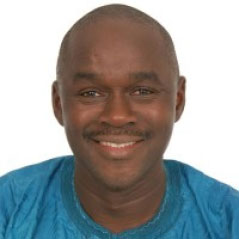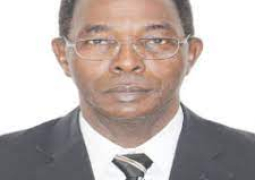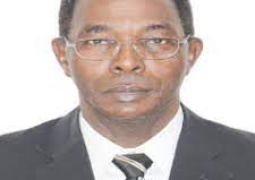
Many years ago, I took a contaminant hydrogeology course in graduate school at the University of Wisconsin (UW)-Madison. I vividly remember the professor putting up a map of cemeteries in Wisconsin on the screen in our first class of the course. Although I’ve forgotten, much of what I learned in that course, the image of our Professor talking about the map of Wisconsin’s cemeteries is stuck in my mind and the issue, as it happens, is relevant to water supply in The Gambia.
But let’s first digest the mouthful, “contaminant hydrogeology” which consists of two keywords: contaminant and hydrogeology. Hydrogeology is a compound word consisting of “hydro” (meaning “of water”) and geology (the study of rocks), and means the study of how water gets into the ground (becoming groundwater), how it flows underground, and how it interacts with rocks. The contaminant part of “contaminant hydrogeology” deals with the contamination of ground water by various chemicals, and from various sources.
So what do cemeteries in Wisconsin have to do with contaminant hydrogeology? With 2.4 million funerals taking place annually in the US, the funeral industry is big business worth $20 billion per year in 2020. Most funerals use embalming fluids to delay the decomposition of the corpse, thus allowing its viewing of the deceased by family and loved ones. These embalming fluids eventually leach from the body after its burial, and can contaminate ground water. The risk is especially serious because the main component of embalming fluids is formaldehyde which is known to cause cancer, and can render groundwater un-drinkable.
The issue of groundwater contamination is one that often crosses my mind because of the potential risks we face in this regard in The Gambia. The risk of groundwater contamination is increasingly important in The Gambia because of the convergence of a few factors which influence the quality and quantity of water available for use in the country.
First, the population of the country presently estimated at 2.4 million, and growing at a rate of 2.9% per annum in 2020. Furthermore, the urban population grew from 47.8% to 62.6% of the population between 2000 and 2020, and was growing at a rate of 3.9% per year in 2020. This means that the demand for water in the country, especially in the urban areas, is going to increase.
Practically all the national water supply in The Gambia is from groundwater. The two main sources of groundwater in the country are two aquifers (underground layers of rock or similar formations that contain water) which cover almost the entire country and parts of Senegal. These aquifers are the Shallow Sandstone Aquifer (SSA) which occurs at depths of 4 m – 30 m below ground, and the Deep Sandstone Aquifer (DSA) which is found 250 m – 450 m below ground. The SSA, which supplies all the groundwater in the country, holds by far the largest amount of water, with an estimated 125 million m3, compared to 650,000 m3 (of which about 80,000 m3 is thought to be potable) for the DSA.
Given the increasing population and high urbanization, the demand for water is increasing in The Gambia. According to estimates based on a high population growth rate scenario, the yearly demand for water (less livestock, irrigation, and environmental needs) will increase from 39.3 million m3 in 2010 to 98.4 million m3 and 178.9 million m3 in 2030 and 2050, respectively. Almost all these needs are going to be met from groundwater sources, specifically, the SSA.
Fortunately, the amount of groundwater extracted from the SSA is recovered by recharge from rainfall, and other sources. Rainfall, however, has been decreasing because of climate change, with a 30% decline between 1950 and 2000. Thus, the amount of rainfall available to recharge the SSA has been decreasing over the past few decades. Increasing urbanization further reduces recharge because the clearing of vegetation to build houses, roads and other structures reduces the amount of rain that can go into the ground to refill the aquifer we are pumping water from.
Our groundwater sources also face the risk of contamination, and saltwater intrusion (especially near the coast). Specifically, the improper and inadequate handling of municipal waste at dumpsites like the Bakoteh’s can lead to groundwater contamination with harmful chemicals. Fortunately, the perennial problem of the Bakoteh dumpsite is being addressed with help from UW-Madison, through a Sister City program between Kanifing Municipality and the City of Madison, Wisconsin.
Other important risks for groundwater contamination in The Gambia are the petrol stations in the Greater Banjul Area (GBA). The underground storage tanks of the stations can corrode over time leaking their contents into the groundwater. These products (petrol and diesel) contain harmful chemicals such as benzene which are known to cause cancer, and harm reproductive and nervous systems, as well as children. These chemicals are so dangerous that heath guidelines for their acceptable levels in groundwater range from zero (for benzene and four others) to 10 parts per million for the xylenes. Put another way, one tablespoon of petrol or diesel can contaminate about 100 thousand litres of groundwater, or a 100m x 100m and 10 m deep swimming pool.
Despite these risks, the GBA is full of petrol stations, with more being built, and some of them around NAWEC well fields which supply water to the GBA. For this reason, there is an urgent need to review the increase in the number of petrol stations in the GBA, the way the storage tanks are installed, and the nature of the tanks themselves. New storage tanks installations should meet high environmental standards such as those from the US Environmental Protection Agency, and existing storage tanks should either conform to these standards – or be replaced. Failure to take such measures could increase present problems with our water supply, and in the long term, increase the risk of ours becoming a nation of fools: with abundant water, but thirsty because of groundwater contamination.
We make the choice, and future generations will judge us.
Katim Seringe Touray, Ph.D., is a soil scientist and an international development consultant. Please visit the online version of this and other articles by him on Medium (https://kstouray.medium.com/) to access the links to sources of information in the article



